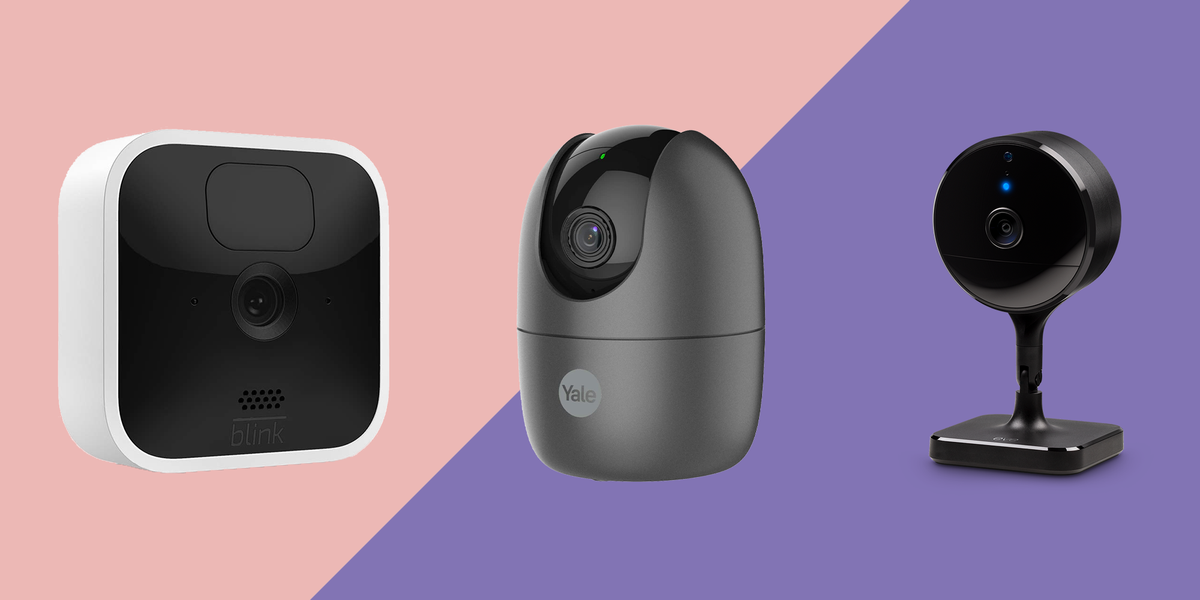How much should you spend on an indoor camera?
There are two main costs when shopping for an indoor security camera: the device (the camera alongside any wires needed to power it) and the subscription plan (which is necessary if you want cloud storage to keep event recordings – more on the below).
If you’re storing video clips on a micro SD card, that will also need to be bought separately, but it’s possible to pick up a 128 gigabyte (GB) card for around £20 these days via Amazon. That’s enough to hold roughly 24 hours of HD video.
The indoor wifi security cameras on our list cost between £30 and £130, with the most affordable being the Blink Mini at £29.99 and the most expensive being the Eve Cam at £129.95. Subscription costs vary, usually between £2 and £5 per month for a single camera plan, but often doubling if you’re adding more devices.
Do you need a subscription for indoor cameras?
You may need subscription services if you want to store your video event history (the short clips triggered by motion from people or pets). Without paying extra your clips won’t be saved for the long-term unless you’re recording them directly to a micro SD card. However, the camera is still fully usable without a paid cloud subscription and all of the models on our list send you phone alerts if they detect motion, and offer two-way talk so you can communicate with anyone near the camera.
Most are also compatible with a type of voice assistant for no extra cost – commonly Amazon Alexa and Google Assistant – and two have sirens that blare if they detect any motion after being armed.
And of course, you can peek at real-time feeds using a phone, tablet or smart display without having to pay a monthly fee, too. Some cameras, such as the Yale, let you store clips without a monthly charge using a micro SD card (that you have to buy separately) but others, like the Google Nest Cam, do require a paid subscription to access 30 days of video history and facial recognition.
Outdoor cameras vs. indoor cameras: What’s the difference?
Indoor cameras are not made to be used outside because they lack the protection needed to survive rain, snow and the rest of the temperamental British weather.
While indoor and outdoor cameras can either be mains or battery-powered, indoor models are typically easier to install (and better for renters) as they don’t require DIY or drilling into your walls – they plug into a socket or stick to a wall using a mounting kit.
As the name suggests, indoor cameras are designed to keep an eye on pets, people or possessions in your home while you’re not there. Both types are security-focused, but outdoor cameras are visible and act as a deterrent against intruders while helping you see what’s happening at the front or back of your property.
How to buy the best indoor security camera
Video quality
This is how clear the image is for your recordings. All of the cameras on our list are at least 1080p resolution (that’s 1920 by 1080 pixels) and that gives you a sharp image when viewing live feeds and clips, or zooming. We don’t recommend going below 1080p as the quality may be blurry and harder to see, especially in poorly lit rooms.
Field of view
This is the area that is seen by the lens of the camera. The larger the field of view number, the more of your room the lens picks up, so you need to think carefully about where you place the camera so it covers everything you need. As a broad rule, we advise aiming for a field of view between 100 and 150 degrees. This gives you a full view of the room, without seeing any warping or distortion in images or video feeds.
Storage
Want to keep your event recordings long-term? You will need to pay for a cloud subscription – these usually store your clips for at least 30 days and are charged on a monthly basis. Each company is different, but basic plans for one camera typically cost between £2 and £5 per month, and if you have multiple devices you will likely need to pay more. On some models, like the Yale, you store footage on your own micro SD card.
Smartphone alerts
All of the indoor wifi cameras on our list work with Android and iOS phones (via their own apps) so you can check the live feed of your room and get alerts if they’re triggered by motion (without having to pay a subscription fee).
Two-way audio
If you want to use your camera to chat with anyone in the room it needs to have two-way audio – which uses the built-in microphone and speaker. It means you can hear anyone in view of the lens, great for chatting to your family after they return home or checking in with your dog during your lunch break at work. All of the cameras on this support two-way audio.
Night vision
Your indoor camera needs to work during the day and night. Most do offer black and white night vision but some models have coloured vision in the dark, such as the Ring Indoor Cam. Make sure your chosen camera comes with either type of night vision – it means you can better use the camera as part of a baby monitoring setup and you are able to glance around your home even if the lights are off.
Smart features
While the basic functions of an indoor camera are similar no matter which brand you choose, some have extra smart features. Voice assistants such as Amazon Alexa and Google Assistant allow you to use your voice to change camera settings or beam the live view to a smart display. Some models can detect whether the movement it spotted was caused by a person or animal, while others come with more advanced abilities such as facial recognition that learns common faces seen in the household, and alerts you to any people it doesn’t know. If you want the camera to work as a deterrent, you may want a model with a built-in siren that goes off after a motion alert – blasting a noise that will (hopefully) cause intruders to flee.






